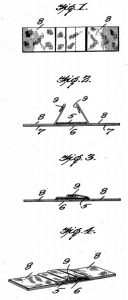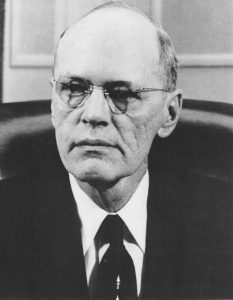The medicine cabinets of most modern bathrooms found throughout the world are likely to contain a box of adhesive bandages to be kept on-hand to treat minor cuts or burns. Such a convenience is easily overlooked but the use of adhesive bandages to treat small wounds is important in reducing the risk of infection as well as minimizing the formation of scars. Contrary to the conventional wisdom of some, bandage use leads to quicker healing of minor wounds than is possible by exposing such wounds to the air.
A personal care product so ubiquitous would naturally represent a huge market opportunity to manufacturers in the space. Over the next five years, the medical tapes and bandages market, which includes adhesive bandages along with gauze and various types of tape, is projected to rise by a compound annual growth rate (CAGR) of 3.8 percent, up from $6.13 billion in 2017 to $7.39 billion by 2022. In 2015, more than one-fifth of first aid tape/bandage products sold in the United States were sold under the Band-Aid® brand owned by American personal care goods giant Johnson & Johnson (NYSE:JNJ).
As 2017 winds to a close, we’re taking the opportunity to return to our Evolution of Technology series and honor an important anniversary date of the issue of a seminal patent in the field of adhesive bandages. This Thursday, December 28th, marks the 91st anniversary of the issuance of a patent covering a bandage technology developed by Earle Dickson, commonly known as the inventor of the Band-Aid® during his employment at Johnson & Johnson. Dickson, a 2017 inductee to the National Inventors Hall of Fame, was the first to develop a surgical dressing that could be conveniently and quickly applied whenever a person suffered a cut or scrape. The fact that this invention continues to be so commercially successful is proof of the importance of patent protections in the early days of an invention’s commercialization.
A Brief History of Wound Care from Ancient Egypt to 19th Century England
Human beings have been suffering wounds and injuries since the earliest days of our history and some of the oldest known societies have left behind evidence of personal wound care. The ancient Egyptians are believed to be the first society to employ the use of adhesive bandages to promote wound healing. According to a 2011 article published by The Journal of the American College of Certified Wound Specialists, Egyptians created a plaster composed of grease, lint and honey. The grease created a barrier to protect the wound, the lint likely improved wound drainage and honey is thought to have provided antibacterial protection.
Not much in the way of advances in surgical dressings for better patient wound care would come about through the 19th century until the work of those like British surgeon Sir Joseph Lister, considered to be an early pioneer in the field of antiseptic surgery. In the 1860s, Lister developed methods for treating surgical dressings with carbolic acid, a germicide which could help prevent against the putrification of wounds. By the end of the 19th century, American industrialist and Johnson & Johnson co-founder Robert Wood Johnson began getting into the business of producing sterilized gauze treated with substances like iodine as a disinfectant.
In the years prior to 1920, Earle Dickson was working for Johnson & Johnson as a cotton buyer working to source the materials that the company needed for its gauze products. Quick access to cotton was very useful to Earle’s wife, Josephine, who would suffer a great number of cuts during the course of completing the family’s housekeeping. According to the official Band-Aid® brand history, Earle would help Josephine bandage these small wounds with cotton and adhesive tape, but the process was time-consuming.
Band-Aid® Bandages Become a Massive Commercial Success
In order to speed up the process of tending to his wife’s cuts and nicks, Dickson came to the idea of preparing a length of adhesive tape with sections of gauze, allowing Josephine to snip off a strip of tape and quickly apply the adhesive bandage. When the couple considered how useful such a product might be in households across the country, Earle brought the idea to his boss James Wood Johnson, another one of the three co-founding brothers of J&J. Band-Aid® brand adhesive bandages first hit the consumer market in 1920.
 According to Dickson’s National Inventors Hall of Fame profile, the first commercially-available Band-Aid® were 18-inches long by 2.5-inches wide with a 1-inch wide strip of gauze running down the middle of the bandage; consumers of these early Band-Aid® products cut individual strips from the larger bandage for personal use. The patent covering Dickson’s adhesive bandage invention is U.S. Patent No. 1612267, titled Surgical Dressing and issued on December 28th, 1926. It claimed a surgical dressing embodying a strip of adhesive tape, a soft dressing offset with relation to the tape and complementary facing strips in adhering relation to exposed portions of the tape as a means to ensure sterility of the dressing.
According to Dickson’s National Inventors Hall of Fame profile, the first commercially-available Band-Aid® were 18-inches long by 2.5-inches wide with a 1-inch wide strip of gauze running down the middle of the bandage; consumers of these early Band-Aid® products cut individual strips from the larger bandage for personal use. The patent covering Dickson’s adhesive bandage invention is U.S. Patent No. 1612267, titled Surgical Dressing and issued on December 28th, 1926. It claimed a surgical dressing embodying a strip of adhesive tape, a soft dressing offset with relation to the tape and complementary facing strips in adhering relation to exposed portions of the tape as a means to ensure sterility of the dressing.
Johnson & Johnson only sold $3,000 worth of Band-Aid® bandages in the first year of commercial sales but improvements from the original design would help Johnson & Johnson see more than $30 million in total sales of Band-Aids by the time of Dickson’s death in 1961. Dickson’s work on the development of Band-Aid® products helped him progress through the corporate ranks until he attained the rank of vice president in 1932; he would retire from Johnson & Johnson in 1957 by which time he was listed as an inventor in five patents related to bandages and dressings.
Through the 20th century, innovative Band-Aid® products would continue to be developed and sold by Johnson & Johnson leading to further adoption by American consumers. The company introduced completely sterile bandages in 1938 and introduced the use of plastic strips on Band-Aid® bandages in 1951. Clear strip Band-Aid® bandages were released to consumers in 1958 and various specialty Band-Aid® products were rolled out beginning in the 1990s, with 2017’s Skin-Flex bandage with high durability being the latest new market entrant for Band-Aid® bandages.
The next generation of adhesive bandage technology will try to do more than increase the comfort of consumers. Researchers at the Massachusetts Institute of Technology have worked in recent years to create a hydrogel inlaid with titanium wire and bioelectronics to create a smart bandage which can be used to more effectively treat wounds. Similar bioelectronic technologies that monitor the oxygen and temperature levels of wounds to determine whether an infection is forming have been developed by a collection of universities including Harvard, Tufts and Purdue.

![[IPWatchdog Logo]](https://ipwatchdog.com/wp-content/themes/IPWatchdog%20-%202023/assets/images/temp/logo-small@2x.png)


![[Advertisement]](https://ipwatchdog.com/wp-content/uploads/2024/04/Patent-Litigation-Masters-2024-sidebar-early-bird-ends-Apr-21-last-chance-700x500-1.jpg)

![[Advertisement]](https://ipwatchdog.com/wp-content/uploads/2021/12/WEBINAR-336-x-280-px.png)
![[Advertisement]](https://ipwatchdog.com/wp-content/uploads/2021/12/2021-Patent-Practice-on-Demand-recorded-Feb-2021-336-x-280.jpg)
![[Advertisement]](https://ipwatchdog.com/wp-content/uploads/2021/12/Ad-4-The-Invent-Patent-System™.png)







Join the Discussion
No comments yet.